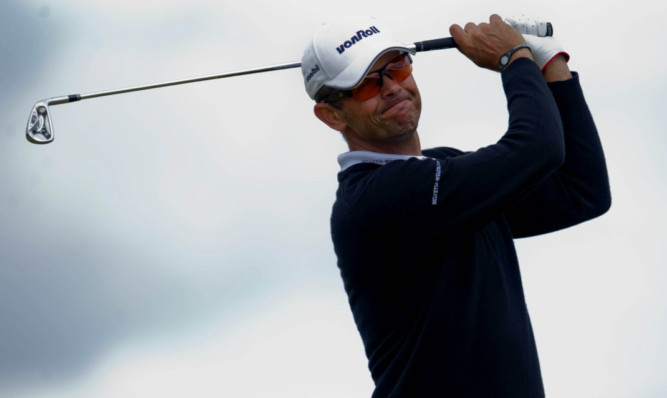A decades-long culture “of bashing balls on the range until your hands bleed” has damaged Scottish Golf and young players in the game are still resistant to change, believes former Ryder Cup player Andrew Coltart.
Coltart is a special advisor to the Scottish Golf Union’s performance committee and remains unhappy with the lack of application of Scotland’s top amateur players, even after one of the most successful seasons in recent history.
Bradley Neil’s Amateur Championship win was just one of three top events in Europe won by Scots in 2014, but Coltart and the SGU still believe that he and other young stars like Grant Forrest and Ewen Ferguson could do more to improve themselves.
Coltart believes that the pervading culture of Scottish Golf has to change and top players have to take the opportunities available to be complete athletes.
“We said a couple of years ago when we started this it wasn’t going to be something that would change immediately,” said Coltart. “It’ll take five, possibly 10 years to implement.
“We’re just coming out of a culture we’ve been stuck in for 20, 30 years that in my opinion is actually detrimental to our game. It’s that standing on the range, hitting balls until your hands bleed garbage.
“Now we can put every little ingredient together to make a proper athlete. I’m astonished that there’s been some resistance to it.”
Last year the SGU warned, fined and even removed some players from their development programmes for not keeping physio and gym appointments, as part of their plan to get tougher with their elite players after the disappointments of 2013.
That attitude seems to have had immediate results, although SGU performance manager Steve Paulding, committee member Steven Docherty and Coltart accept the talents of Neil, Forrest and others blossomed this year.
Coltart continued, “There’s clearly been a batch of guys who are very talented. But I think part of the improvement this year is because there’s been more of the stick and less of the carrot.
“Guys have liked this spoiled, easy approach, but they’ve got to be pushed in the right direction. Hopefully we have the kids from early ages now in the academies and by 13-14 years old they’ll already want to do all these things.
“There’s an incredible reluctance (by current players) to use stats which I just don’t understand. We need that information to help them, they should be wanting to know them.
“A lot of the players simply don’t want to hear it. They say either `what does he know’ or ‘I don’t believe that’. Or we even get the petted lip.”
The new academy structure which is amalgamated, unlike the SGU and SLGA merger which is still in discussion should provide the best place for young players to be ingrained into the new culture, said Paulding.
“I lot of what we are doing I believe is starting to pay dividends, but it’s still going to be a long, slow process,” he said. “We are looking at another four or five years at least before they come through.
“Obviously a Nations Cup win, three individual victories in big events this year, shows that we are competitive again, with good representation in GB&I in mens and boys level as well.
“We still have a lot of work to do with everyone. We have some great raw talent, we have some rough diamonds out there and if we can do the right work with them we can improve them.
“But ultimately we can only give them the tools, they have got to get on with the job themselves.”
The SGU have announced their squads for 2015 with Neil and Forrest still prominent, although they are both expected to turn professional within the next 18 months.
The coaching structure has also been re-aligned with former Scottish professional champion David Orr joining the five-strong team of national coaches.
This winter groups of leading Scottish players will be taken to training camps in the United Arab Emirates, South Africa and Spain.
